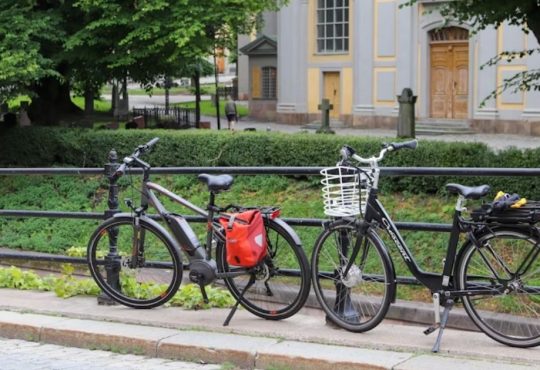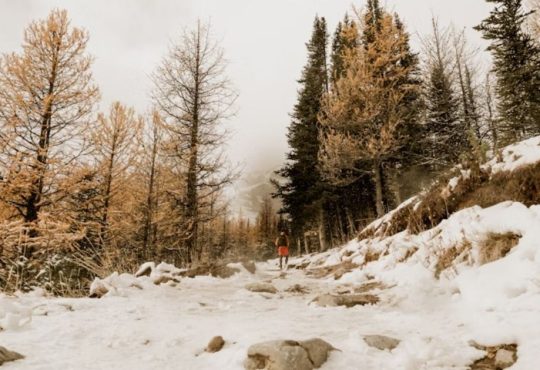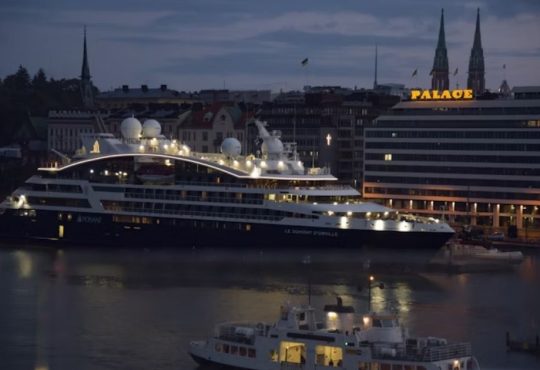Asia is a treasure trove of diverse landscapes, rich cultures, and unforgettable experiences. Whether you’re seeking pristine beaches, bustling cities, or historical landmarks, this vast continent offers something for every type of traveler. From Indonesia’s untouched islands to Japan‘s vibrant metropolises, we’ve rounded up the top 15 breathtaking Asian destinations that deserve a spot on your travel bucket list. Plus, we’ll share essential travel tips to help you navigate Asia seamlessly, ensuring a stress-free and enriching journey.
1. Sumba, Indonesia
Sumba, a distinctive island in western Indonesia, tops the list. It perfectly balances pristine natural beauty with vibrant cultural traditions. Enjoy stunning and tranquil beaches like Nihiwatu, formerly voted the world’s best, alongside sunsets over rolling hills of golden maize and cassava.
2. Siargao, Philippines
Siargao, a teardrop-shaped island in the Philippines, has earned a reputation as a surfer’s paradise. Recently, it’s gained popularity among a broader range of travelers, thanks to increased flights from Manila and Cebu. The island offers pristine beaches, crystal-clear waters, and a laid-back atmosphere, making it an ideal destination for those seeking both adventure and relaxation.
3. Da Nang, Vietnam
Nestled between the South China Sea and Sơn Trà Mountain, Da Nang is a Vietnamese city known for its flourishing restaurant and cocktail scene. The city offers natural beauty, urban development, stunning beaches, and vibrant nightlife.
4. Tainan, Taiwan
As Taiwan’s oldest city, Tainan is a treasure trove of historical sites and cultural landmarks. Visitors can explore ancient temples and traditional markets and sample the city’s renowned street food. Tainan’s rich history and well-preserved heritage make it a must-visit for culture enthusiasts.
5. Ipoh, Malaysia
Often overshadowed by Kuala Lumpur and Penang, Ipoh is emerging as a destination in its own right. Known for its colonial architecture, vibrant street art, and culinary delights, the city offers a unique blend of old-world charm and contemporary culture.
6. Osaka, Japan
Osaka, Japan’s third-largest city, is renowned for its modern architecture, vibrant nightlife, and hearty street food. The city offers a dynamic urban experience, with attractions ranging from historical castles to bustling shopping districts.
7. Nan, Thailand
Located in northern Thailand, Nan is a province rich in natural beauty and cultural heritage. Visitors can explore ancient temples and lush national parks and experience this tranquil region’s local way of life.
8. Lijiang, China
Lijiang, situated in Yunnan province, is known for its well-preserved ancient town, a UNESCO World Heritage site. The city’s intricate network of canals, cobblestone streets, and traditional Naxi architecture offer a glimpse into China’s rich history.
9. Khao Yai, Thailand
Located two-and-a-half hours north of Bangkok, Khao Yai is emerging as an exciting new wine region. This area includes Thailand’s first national park, Khao Yai National Park, a UNESCO site recently known for “tropical wine.” Local and international chefs pair Thai wines with modern Thai and Burmese cuisine, showcasing the growing quality and versatility of the region’s wines.
10. Koh Samui, Thailand
Koh Samui has gained recognition as one of the top islands globally. The island, known for its tranquil Chaweng Beach and warm hospitality, has always been a beloved destination for Thai travelers. Koh Samui’s charm lies in its serene beaches, delectable local cuisine, and friendly locals, epitomizing the Thai expression “sabai-sabai,” meaning “take it easy.”
11. Yunnan, China
Yunnan province, located in the southwest mountainous region of China, retains the old practices of its multi-ethnic communities, which are mainly influenced by Tibetan culture. The ancient Tea Horse Road trade routes facilitated the exchange of pu-erh tea for goods like horses and herbs, a significant aspect of Yunnan’s history. Travelers can experience Yunnan’s culture on the Tea Horse Road, taking in scenic and historic landscapes, traditional architecture, and local delicacies.
12. George Town, Penang, Malaysia
George Town, the capital city of Penang, Malaysia, is renowned for its rich cultural heritage and vibrant arts scene. The city boasts a unique architectural and cultural townscape shaped by centuries of intermingling between various cultures and religions. Recognized as a UNESCO World Heritage Site, George Town offers visitors a glimpse into its colonial past through its well-preserved buildings and historical landmarks. The city’s culinary scene is equally impressive, often hailed as the food capital of Malaysia, offering a diverse array of street food that reflects its multicultural influences.
13. Ubud, Bali, Indonesia
Ubud, located in the heart of Bali, is often considered the island’s cultural hub. Known for its traditional crafts and dance, Ubud is home to numerous art galleries and workshops. The town is surrounded by lush rainforest and terraced rice paddies dotted with Hindu temples and shrines, making it a serene retreat for those seeking cultural enrichment and natural beauty.
14. Singapore
When completed, Singapore will be home to Southeast Asia’s largest suspended LED interactive sky screen. Designed after the Shimao Tianjie Sky Screen in Beijing, the 200-meter screen is expected to be constructed within one and a half years at an undisclosed location. It is capable of broadcasting live events such as concerts.
15. Siem Reap, Cambodia
Siem Reap, Cambodia’s second-largest city, is renowned for its proximity to the Angkor Wat temples but boasts colonial architecture, vibrant culinary scenes, and rich cultural experiences. Visitors can explore the ancient temples, enjoy traditional performances, and immerse themselves in the local way of life.
The Key Factors to Consider When Traveling in Asia
Asia is a vast and diverse continent with rich cultural traditions, breathtaking landscapes, and vibrant cities. Whether you’re a first-time traveler or a seasoned explorer, planning a trip to Asia requires careful consideration to ensure a smooth and enjoyable experience. Here are the key factors to keep in mind when traveling in Asia.
1. Visa and Entry Requirements
Each country in Asia has different visa regulations. Some nations, like Japan and Thailand, allow visa-free entry for short stays, while others, such as China and India, require visas in advance. Always check the latest entry requirements for your destination and apply for visas ahead of time if necessary. Consider using e-visa services or visa-on-arrival options where available.
2. Best Time to Visit
Asia’s climate varies significantly, so choosing the right travel season is important. The monsoon season (June to September) can affect travel plans in countries like India, Thailand, and Indonesia, while winter months (December to February) offer cooler temperatures in destinations like Japan, China, and South Korea. Research the best time to visit based on your preferred weather conditions and planned activities.
3. Cultural Sensitivity and Etiquette
Asia is home to diverse cultures and traditions. Understanding local customs can enhance your travel experience and help you show respect to the local communities. For instance, removing shoes before entering temples in Thailand, dressing modestly in Muslim-majority countries like Malaysia and Indonesia, and avoiding public displays of affection in conservative societies can all contribute to a positive travel experience.
4. Budgeting and Currency Exchange
The cost of travel varies widely across Asia. While countries like Japan and Singapore are known for higher fees, destinations such as Vietnam, Cambodia, and Nepal offer budget-friendly options. Familiarize yourself with the local currency and exchange rates, and consider using ATMs or digital payment apps where accepted. Keep cash on hand for small purchases, particularly in rural areas.
5. Transportation and Getting Around
Asia offers many transportation options, from efficient Tokyo and Hong Kong metro systems to budget-friendly tuk-tuks in Bangkok and auto-rickshaws in India. High-speed trains are convenient for traveling long distances in China and Japan, while buses and domestic flights are common for intercity travel. Researching local transportation options will help you navigate efficiently.
6. Food and Dietary Considerations
Asian cuisine is diverse, flavorful, and often a highlight of travel. While street food is necessary in many destinations, be mindful of hygiene and opt for freshly prepared dishes. Travelers with dietary restrictions should learn key food phrases in the local language or use translation apps to communicate preferences. In countries like India, vegetarian options are widely available, whereas Japan and Korea may require more planning for dietary needs.
7. Health and Safety Precautions
Prioritizing your health and safety during travel is crucial. Get vaccinated as per the requirements of your destination, and carry essential medications. In tropical regions, mosquito-borne illnesses like dengue and malaria can be a concern, so insect repellent is recommended. Travel insurance is also advisable to cover medical emergencies, trip cancellations, or lost belongings.
8. Connectivity and Communication
Staying connected is easier with local SIM cards or eSIM options, available in most Asian countries at affordable rates. Free Wi-Fi is standard in major cities, airports, and hotels, but having mobile data ensures smooth navigation and communication. Learning a few key phrases in the local language or using translation apps can also enhance interactions with locals.
9. Local Laws and Regulations
Familiarizing yourself with local laws can help avoid unintentional legal issues. For example, chewing gum is banned in Singapore, drug offenses carry severe penalties in many countries, and disrespecting royal figures is a serious offense in Thailand. Research specific regulations and follow them to ensure a hassle-free trip.
10. Packing Essentials
Packing wisely for an Asian trip depends on your destinations and planned activities. Lightweight clothing is ideal for tropical climates, while layered outfits are necessary for colder regions like the Himalayas. Travel essentials include a universal power adapter, comfortable walking shoes, sunscreen, and a reusable water bottle. Additionally, modest clothing is recommended when visiting religious sites.
11. Sustainable and Responsible Travel
Being a responsible traveler means minimizing your environmental impact and respecting local cultures. Support local businesses, reduce plastic use, and participate in eco-friendly tours. In places like Bali and the Philippines, efforts to preserve marine life include avoiding single-use plastics and using reef-safe sunscreens.
12. Language and Communication
While English is widely spoken in major cities, rural areas may require some basic knowledge of the local language. Learning common Mandarin, Thai, or Japanese phrases can enhance your travel experience and foster connections with locals. Bring a translation app or phrasebook for help.
13. Festivals and Events
Asia is home to vibrant festivals that can add a unique cultural dimension to your trip. Events like the Chinese New Year, Holi in India, Songkran in Thailand, and the Lantern Festival in Taiwan offer unforgettable experiences. However, these peak travel periods may require bookings for accommodations and transportation.
14. Adventure and Outdoor Activities
From trekking in the Himalayas to scuba diving in the Philippines and skiing in Japan, Asia offers diverse outdoor adventures. Research activity requirements, permits, and the best seasons for these experiences. Hiring experienced guides for activities like mountain climbing or jungle trekking is advisable for safety.
15. Customs Regulations and Duty-Free Allowances
Different countries have specific rules on what travelers can bring in and out. Some items, like traditional medicines, food products, or religious artifacts, may require declaration at customs. Check the duty-free allowances and restricted items list to avoid any travel disruptions.
Exploring Asia is more than just visiting new places—it’s about immersing yourself in different cultures, tasting incredible cuisines, and discovering landscapes that leave a lasting impression. Whether you’re chasing adventure in Thailand, soaking in the heritage of Taiwan, or indulging in Malaysia’s street food scene, thoughtful planning will enhance your experience. Remember these travel tips, and you’ll be ready to embark on an unforgettable journey through one of the world’s most captivating regions.





